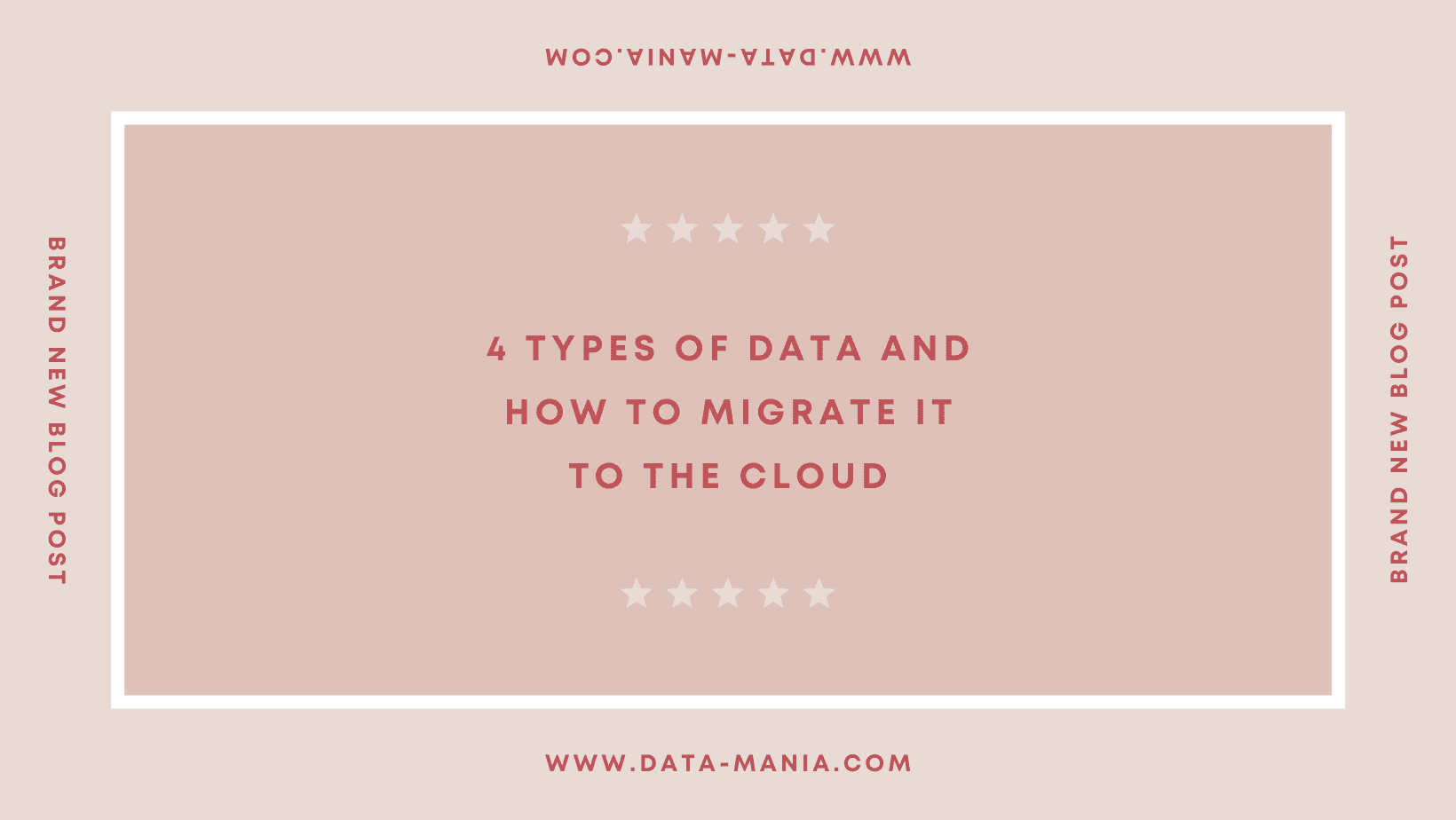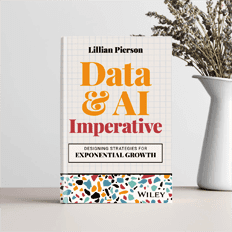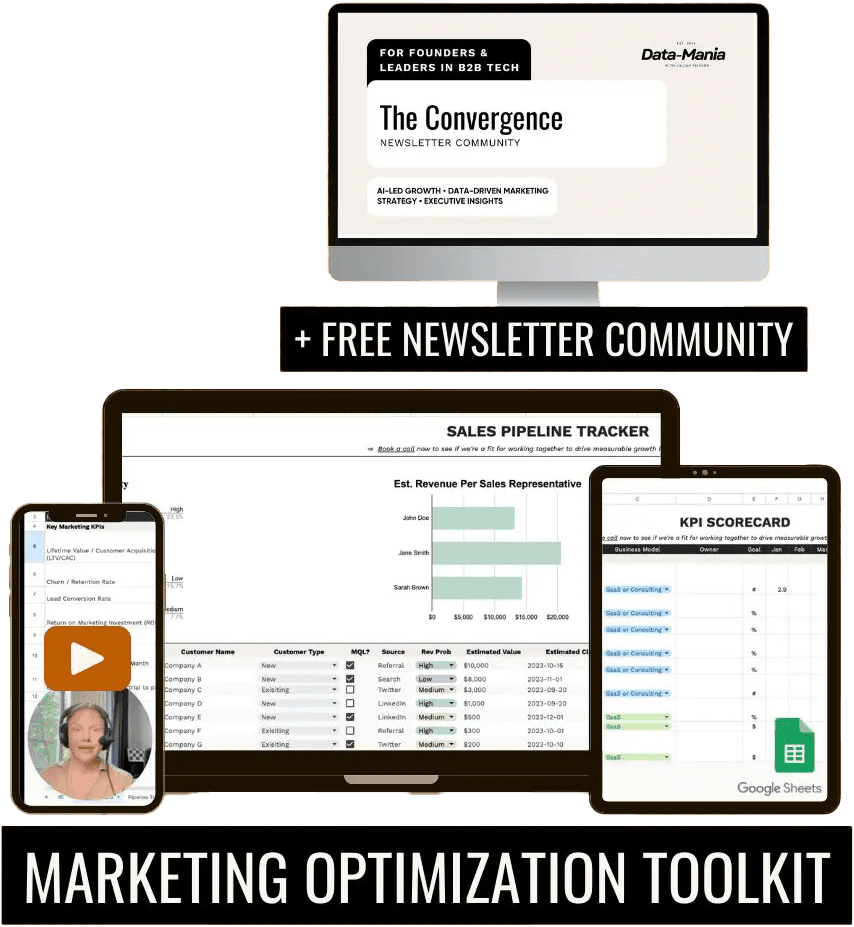Curious to know what types of business data are out there? Keep reading to learn more about the 4 types of data and how to migrate it to the cloud.
YouTube URL: https://youtu.be/BQRTXiltqJg
If you prefer to read instead of watch, then read on…
For the best data leadership and business-building advice on the block, subscribe to my newsletter below and I’ll make sure you get notified when a new blog installment gets released (each week). 👇
[convertkit form]
What Is Data Migration?
Data migration involves the transfer of data from one data storage system, format or computer system to another. Organizations choose to migrate their data for various reasons—these include adopting a third-party cloud vendor, upgrading or replacing equipment like servers, consolidating websites, maintaining infrastructure, upgrading software, moving applications or databases to a new environment, and merging with another company.
In a modern IT environment, data migrations commonly involve moving data to the cloud. In this article I’ll cover 4 types of data that exist in almost every organization, and show how to build a winning cloud migration strategy for each one.

Types of Business Data
Structured Data
Structured data, also known as quantitative data, is highly ordered and is easy for Machine Learning algorithms to decipher. It is typically managed using Structured Query Language (SQL), often in a relational database that allows users to quickly create and access structured data.
Structured data may include names, dates, addresses and payment card numbers, which can pose liabilities. Compared to unstructured data, structured data is easier to use for ML algorithms, business users and a variety of tools.
Applications, websites and databases can function more efficiently if the structured data is close, so they are often stored in the same location as the data (or both are placed in the cloud). This allows users to access data remotely through an application.
Unstructured Data
Unstructured data is not structured according to a predefined schema or data model, but it does have an internal structure. This data can include rich media such as images and video in a wide range of formats, and can be stored in non-relational databases (i.e. NoSQL). The data is stored in the native (original) formats of the data files—the data stays undefined until it is required.
Additional advantages of unstructured data include faster collection rates and flexible storage in a data lake (priced on a pay-by-use basis). In the modern data ecosystem, unstructured data is often processed and enriched using external APIs, such as data pipeline APIs, AI services, and video APIs.
When you move data from a file system to the cloud, you have to make sure the file metadata and ACLs are all preserved, so you can use your existing permissions to access the data. Migration tools can help minimize the issues associated with migrating unstructured data. It is important to prioritize your data by analyzing your content to determine the migration approach.
Semi-Structured Data


Semi-structured data lacks a strict structural framework and cannot be organized in a relational database, but it does retain some structure. This includes open-ended (unstructured) text arranged by subjects. For example, emails can be sorted according to semi-structured categories like sender, recipient and date.
Advantages of semi-structured data include support for hierarchical data to simplify complex relationships, avoidance of complicated translations of object lists into a relational database, and serialization of objections in a lightweight library.
Sensitive Data
Sensitive data is information that requires strict data protection and cannot be accessed without special permissions. This includes both physical and digital data, which is stored and used restrictively to ensure privacy and comply with legal obligations.
According to most data regulations, sensitive data is defined as any information that cannot be disclosed without authorization—this includes personally identifiable information (PII). Data is usually protected both in transit and at rest using encryption.
Developing an Effective Strategy for Migrating Data to the Cloud
The following steps can help you build an effective data migration strategy for the cloud.
Objective Assessments
It is important to know your existing infrastructure, database and software schemas in order to effectively plan your migration strategy. Start by evaluating business use cases of a data lake. Consider applying security and prioritizing the data or applications you want to move first. This will help inform the effort, timeframe and cost of migration.
Proof of Concept on a Subset of Data
Before you commit to a new cloud provider, it is recommended you test the waters by developing a proof of concept (POC). The POC will help you compare and validate performance, features and network issues. Test your workload to establish insights about the cloud services provided (such as storage) and security requirements (e.g. controls), and evaluate the scaling of clusters.
Production Build
Once you have verified that the cloud provider and migration model meet your requirements, you can begin the actual migration process. You should move your data and applications to the cloud according to a phased approach, taking into account:
- Infrastructure (how to migrate storage and compute, networking, sizing and scaling)
- Data ingestion retooling (to move date from an on-prem platform to the data lake in the cloud)
- Data security and access governance
- Cloud resource usage
- Inventory of on-prem data
- Translation of data transformation pipelines to cloud mechanisms
- Strategy for migrating applications (i.e forklift or rewrite)
- Migration of historical data
- Data lake management
Post-Production
Once you’ve successfully re-hosted your applications and data, you can optimize their performance by automating processes in your new infrastructure. Use an automatic testing framework, perhaps adopting an infrastructure-as-code (IaC) approach, in order to streamline the deployment process. Manually double-check the more critical aspects of your infrastructure, such as performance, security and compliance.


Adapting Your Strategy to Different Types of Business Data
A data migration strategy is not one-size-fits-all. Let’s see how to adapt your strategy to each of the 4 types of business data described above:
-
Structured data—
For structured data, prefer to use automated tools offered by your cloud provider. All cloud providers have automated systems that can take structured data systems, in particular databases, assess them for migration compatibility, and move them reliably to the cloud.
-
Unstructured data—
It is important to evaluate if your unstructured data is used by production applications, and how. If the data is commonly accessed by production applications and is mission critical, consider an online migration. In this process, on-premises data sources are continuously synchronized with the cloud. Another factor is the size of the data—if the dataset is very large, you can use storage appliances to physically ship the data to your cloud provider without having to transfer it over a WAN.
-
Semi-structured data—
for semi-structured data, integrity is an important consideration. Perform checksums to ensure the data hasn’t changed when being copied from source to destination. If possible, move entire VMs or file systems to the cloud. This is the best way to preserve the integrity of the data.
-
Sensitive data—
when transferring sensitive data, it is important to evaluate if the cloud environment is sufficiently secure to meet your security and compliance requirements. If not, you can perform on-the-fly data masking. This involves modifying sensitive parts of your dataset as they are copied to the cloud environment. For example, you can mask customer names, social security numbers or other personally identifiable information (PII) to avoid having to meet compliance requirements in your cloud environment.
I hope this will be helpful as you plan your successful data migration to a public cloud environment.
If you want me to do all the heavy-lifting for you, you can get my evergreen analytics strategy framework. It comes with the 44 sequential action item steps that you need to take in order to create a fail-proof data strategy plan for your company. It’s called the Data Strategy Action Plan.
The Data Strategy Action Plan is a step-by-step checklist & collaborative Trello Board planner for data professionals who want to get unstuck & up-leveled into their next promotion by delivering a fail-proof data strategy plan for their data projects.
Start executing upon our Data Strategy Action Plan today.
Also, I have a free Facebook Group called Becoming World-Class Data Leaders and Entrepreneurs. I’d love to get to know you inside there, so I hope you can join our community here.
Hey! If you liked this post about the types of business data, I’d really appreciate it if you’d share the love with your peers! Share it on your favorite social network by clicking on one of the share buttons below!
NOTE: This blog post contains affiliate links that allow you to find the items mentioned in this article. While this blog may earn minimal sums when the reader uses the links, the reader is in NO WAY obligated to use these links. Thank you for your support!





